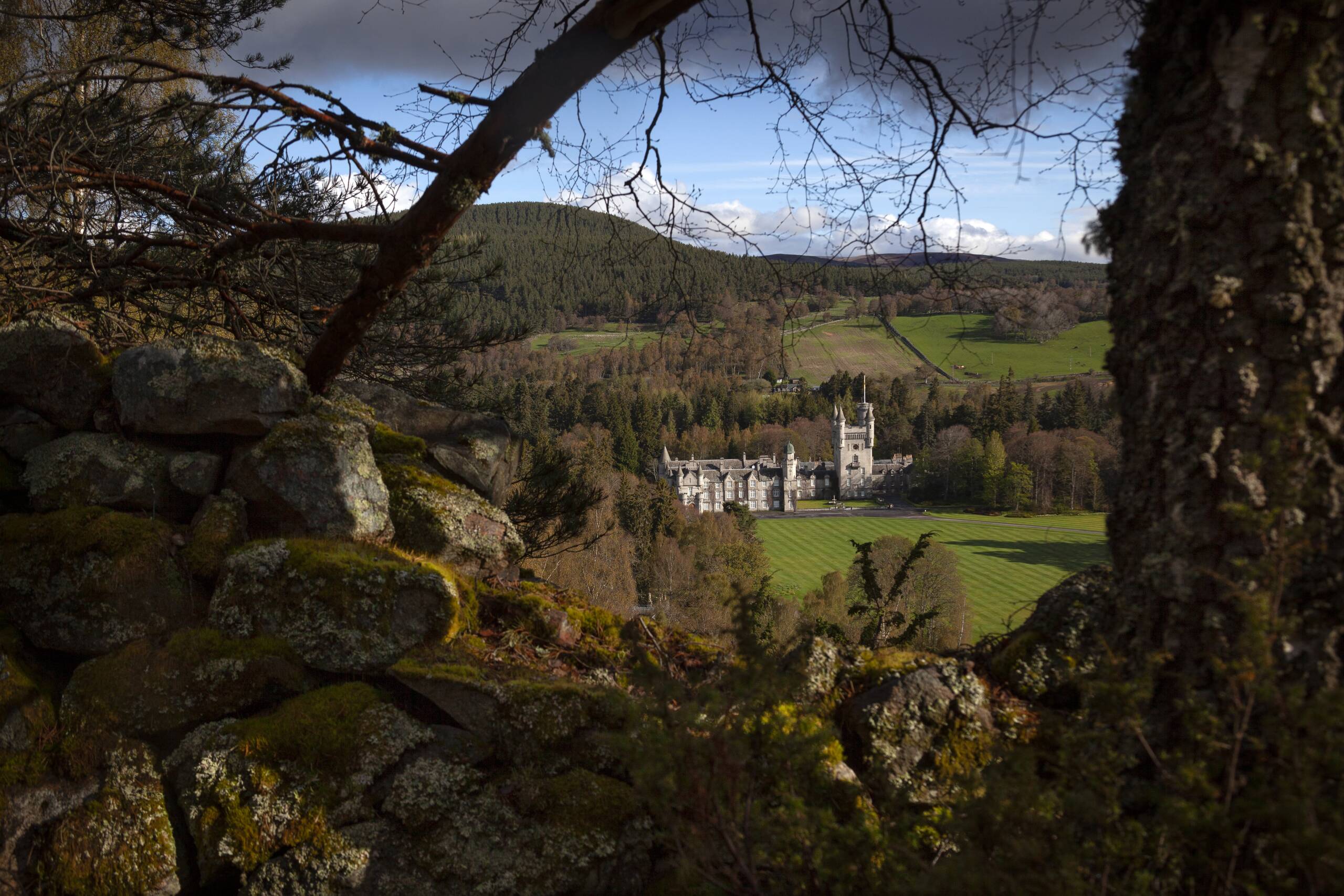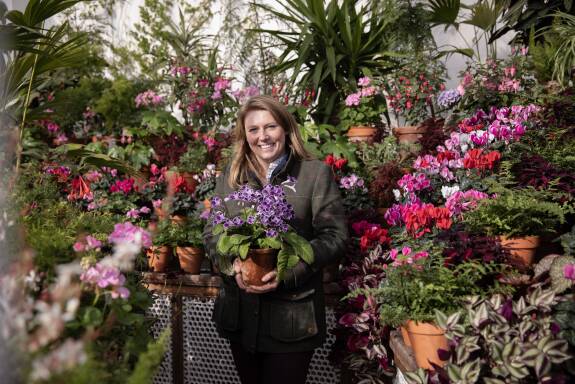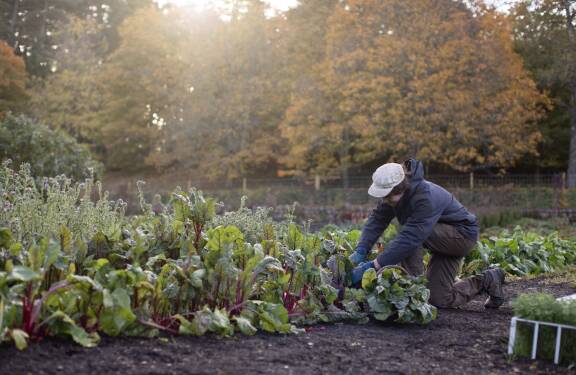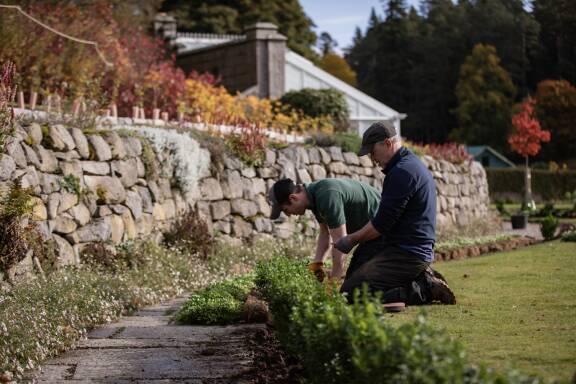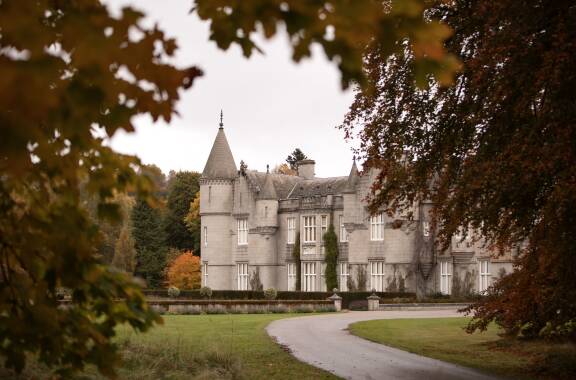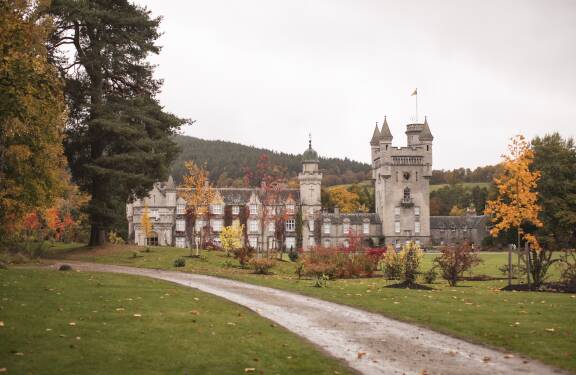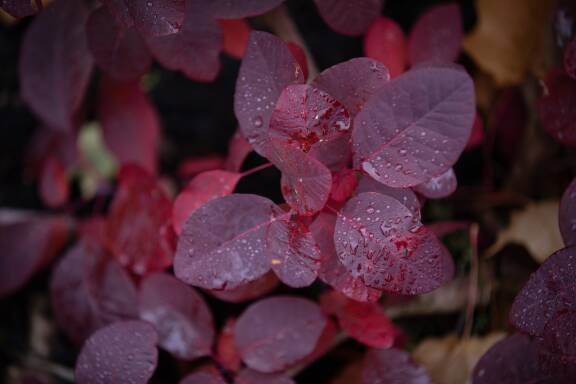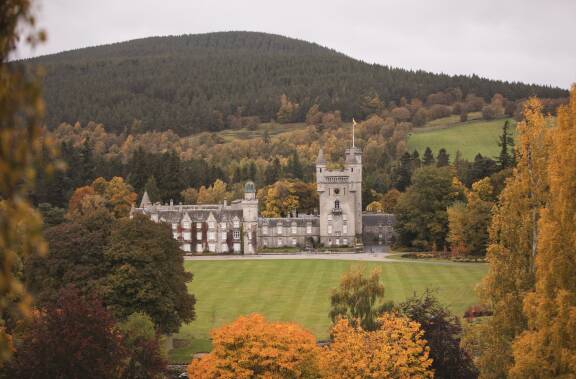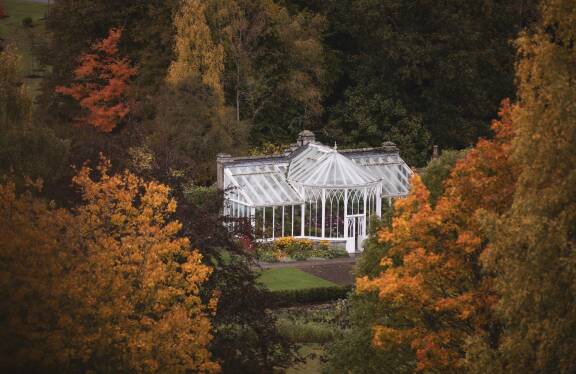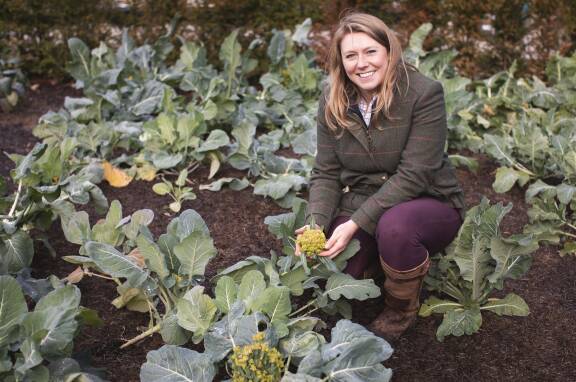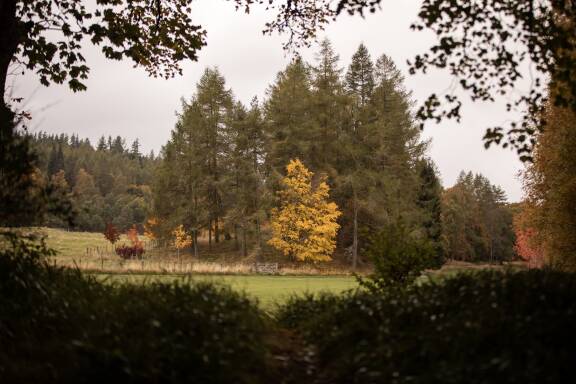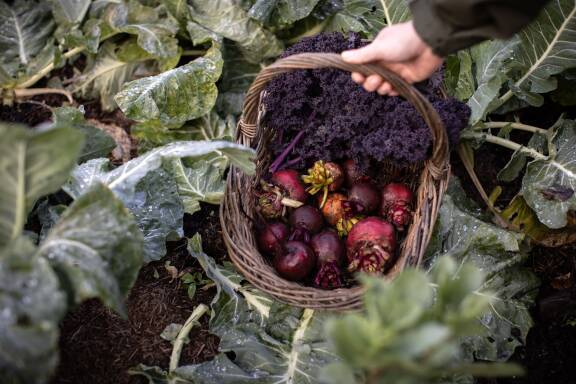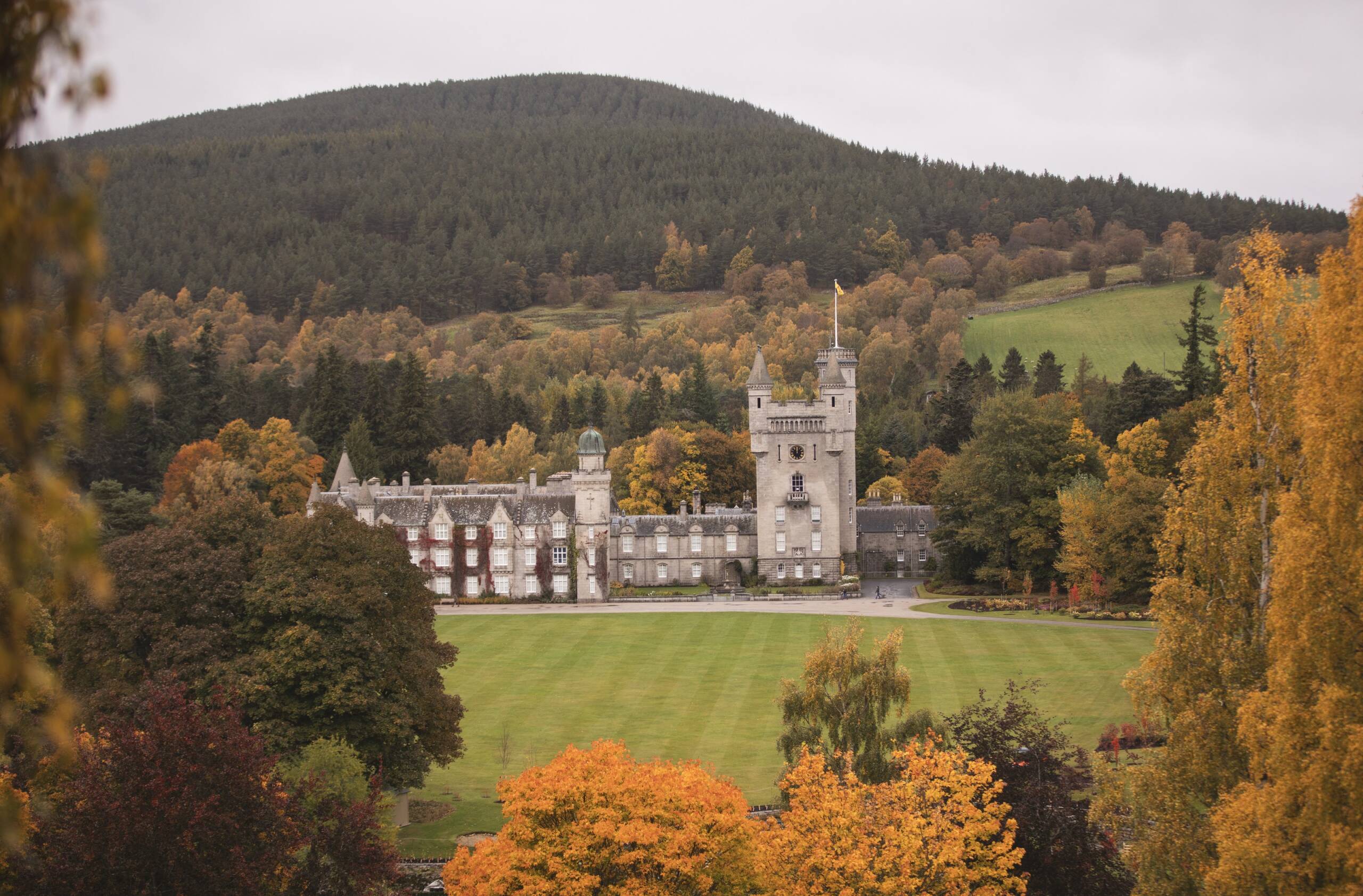
Autumn in bloom at Balmoral
Autumn is a very special time of year at Balmoral Castle and Estate.
The warm, vibrant hues of red, burnt orange and gold start to emerge on trees and shrubs, and that stunning golden light photographer’s love so much, known as ‘golden hour’, can be commonly found around the Cairngorms as the days shorten and the sun sets over the mountains earlier in the day.
Yes, summer has its many advantages, but it is in autumn that we believe the estate truly comes to life. It also coincides with National Tree Week, the UK’s largest annual tree celebration, running from 23 November – 1st December 2024. Across the country, people plant thousands of trees to mark the start of the winter tree planting season. Trees, shrubs, and hedgerows are some of the most powerful tools we have in the fight against climate change and help provide habitat for wildlife for years to come.
This year, we will be planting more trees and shrubs for year-round interest, so you will be able to visit our garden soon to see these magnificent colourful specimens in their full glory.
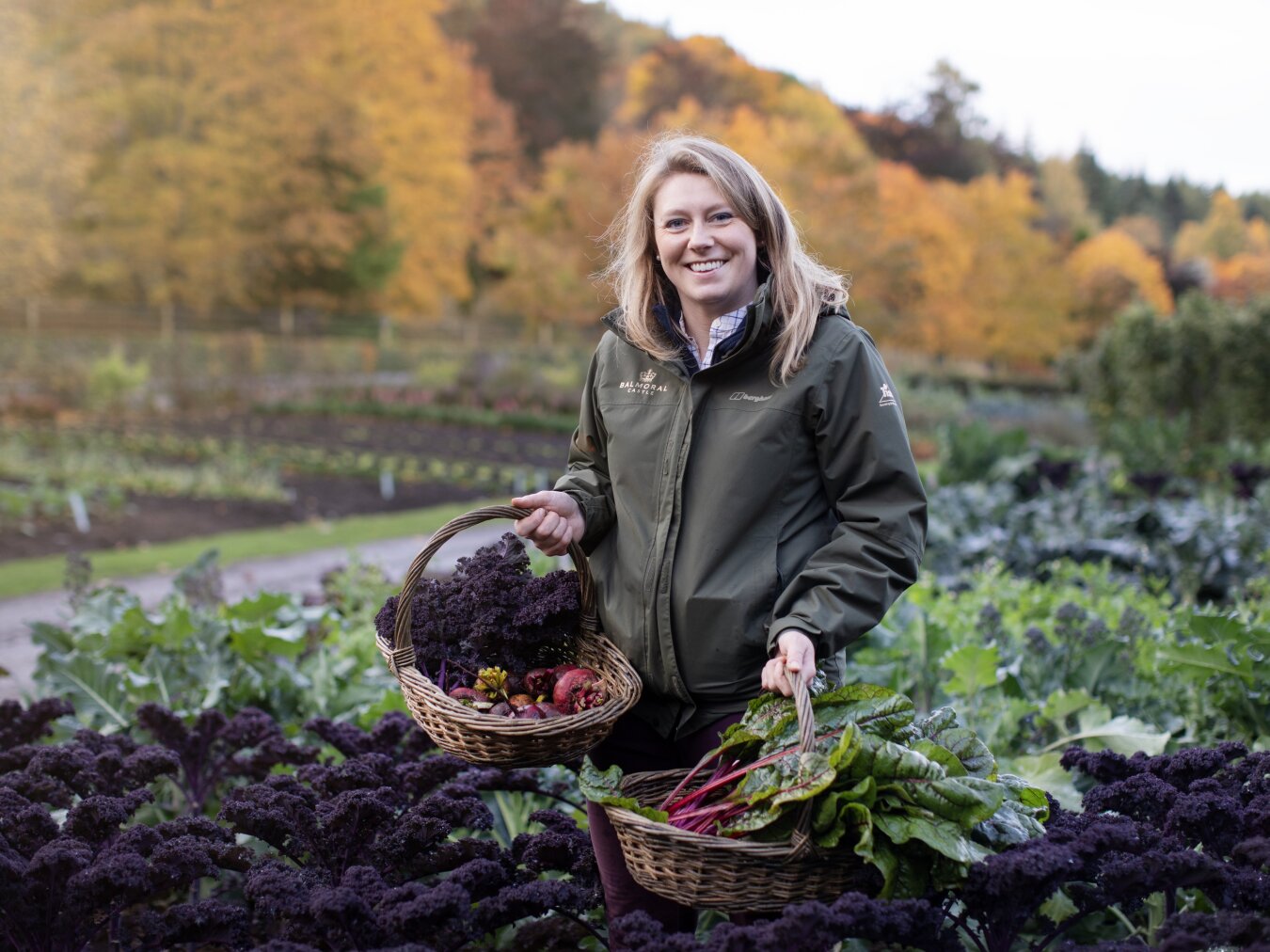
One particular fan of the season is Kirsty Wilson, Head of Gardens, at Balmoral Estate. Her well-worn experience and expertise with specialist plants makes gardening at Balmoral a joy — especially during autumn.
“As I walk around the garden at Balmoral, there’s a real sense of autumn in the air,” shares Kirsty. “Golden leaves lay scattered on the ground; the smell of cold dampness fills my nostrils and there is enough of a chill to need a warm cosy jacket."
Kirsty Wilson, Head of Gardens“While enjoying the vibrant sights and smells of autumn, I like to take some photographs of the trees and shrubs we have newly planted in the garden, which you’ll see throughout this blog post. At this moment, they are showing magnificent autumn colour. Many of these new trees and shrubs were planted in the last year by the hard-working garden team and HM King Charles III.”
Below, you will find a list of Kirsty’s favourite plants from Balmoral’s gardens, with enthralling information on their history and qualities…
Sorbus commixta
Sorbus commixta, also known as the Scarlet Rowan, was introduced to the UK around the 1880s and originates from Japan and Korea. It is looser in habit than our native rowan and its feathery green summer foliage turns to a magnificent rich scarlet in the autumn. White flowers are produced on this tree in the spring which then turn into red berries into the autumn. A wonderful tree for wildlife it thrives best on a free draining soil.
Rhododendron luteum
This must be one of my all-time favourite shrubs. A highly scented yellow Rhododendron. Typically, it flowers in May this deciduous shrub also has striking Autumn red and orange leaf colour. A must for your garden and loved by bees in spring. A lovely old species is much loved across gardens in the UK. It is found in the wild in the Caucasus, Türkiye, SW Russia, Georgia, and Ukraine and is happiest grown in full sun to partial shade, in moist, acidic soil that has been enriched with plenty of organic matter here we use well-rotted manure to enrich the soil and feed the plants.
Betula ermanii
Known botanically as Betula ermanii, but also known as Erman's Birch, it is admired for its attractive bark, which is peeling and creamy in colour, tinged with pink. The vibrant green, leaves are always the first to emerge in the spring at Balmoral and are the first to fall in the Autumn, turning a bright strong yellow before they fall. Like most Birch trees, it is a wonderful tree that performs well and will tolerate most soil types. A reliable tree for winter interest or architectural structure in the garden. It can be effectively planted as a single specimen or in groups to show off to great effect.
Hydrangea ‘limelight’
A robust, attractive deciduous shrub that reaches about 2m in height. It has dark green leaves, and compact flower panicles forming a dense cone of sterile florets that open to pale lime green. These then become creamy-white, a slight pink flush gradually deepens to give a pink and green colour mix at maturity in summer and leading into the month of autumn. It grows in any soil that retains moisture and is well-drained. For light exposure, it prefers to be in partial shade or sun if the soil remains reliably moist. They are ideal for using in cut flower displays — both fresh and dried.
Acer x freemanii ‘autumn blaze’
Acer x freemanii autumn blaze is a striking cultivar of a naturally occurring hybrid between Acer rubrum and Acer saccharinum that was discovered in the United States National Arboretum in the 1930s. This tree is significant for its outstanding display of bright flame-red foliage in the autumn. Looking at the tree is breath-taking the colour is so vivid. It is a strong grower that has unique, deeply lobed leaves and dark green foliage during the spring and summer periods. The tree tolerates all soil conditions and is most suited to parklands and gardens with plenty of space for it to reach its full glory at maturity. This tree will be a wonderful addition to the canopy for years to come at Balmoral.
Sorbus vilmorinii
This elegant spreading tree with dark green fern like leaves that turn orange or bronze in autumn. Along with the autumn leaves the tree produces soft pink berries that turn white as they age. Introduced from Western China in 1889 by the Abbé Delavay. This charming tree also received the Royal Horticultural Society's Award of Garden Merit making it a star performer for your garden. Prefers fertile, humus-rich, well-drained soil in full sun or light shade. It is fully hardy and tolerant of urban pollution and coastal conditions. After about ten years it will reach 4m in height and about 3m wide.
Acer japonicum ‘aconitifolium’
‘Aconitifolium' means leaves like aconite which aptly describes this delicate maple resembling that of the famous Herbaceous perennial. The deeply cut leaves unfold green and remain so over summer. In autumn, the foliage creates a stunning display of greens, yellows, oranges, and hot reds. I believe it produces the best pure scarlet colour of any maple. Can be grown in a large tub or border to form a large shrub or small tree that won't dominate or overtake the garden. Leaf colouring is best in partial shade, but they can tolerate full sun, however, leaf and wind scorch may occur. For this reason, it may prefer a more sheltered position.
Stay Informed
Sign up to our newsletter today and be the first to receive exclusive updates on events, experiences, and special offers at Balmoral Castle and Estate.
